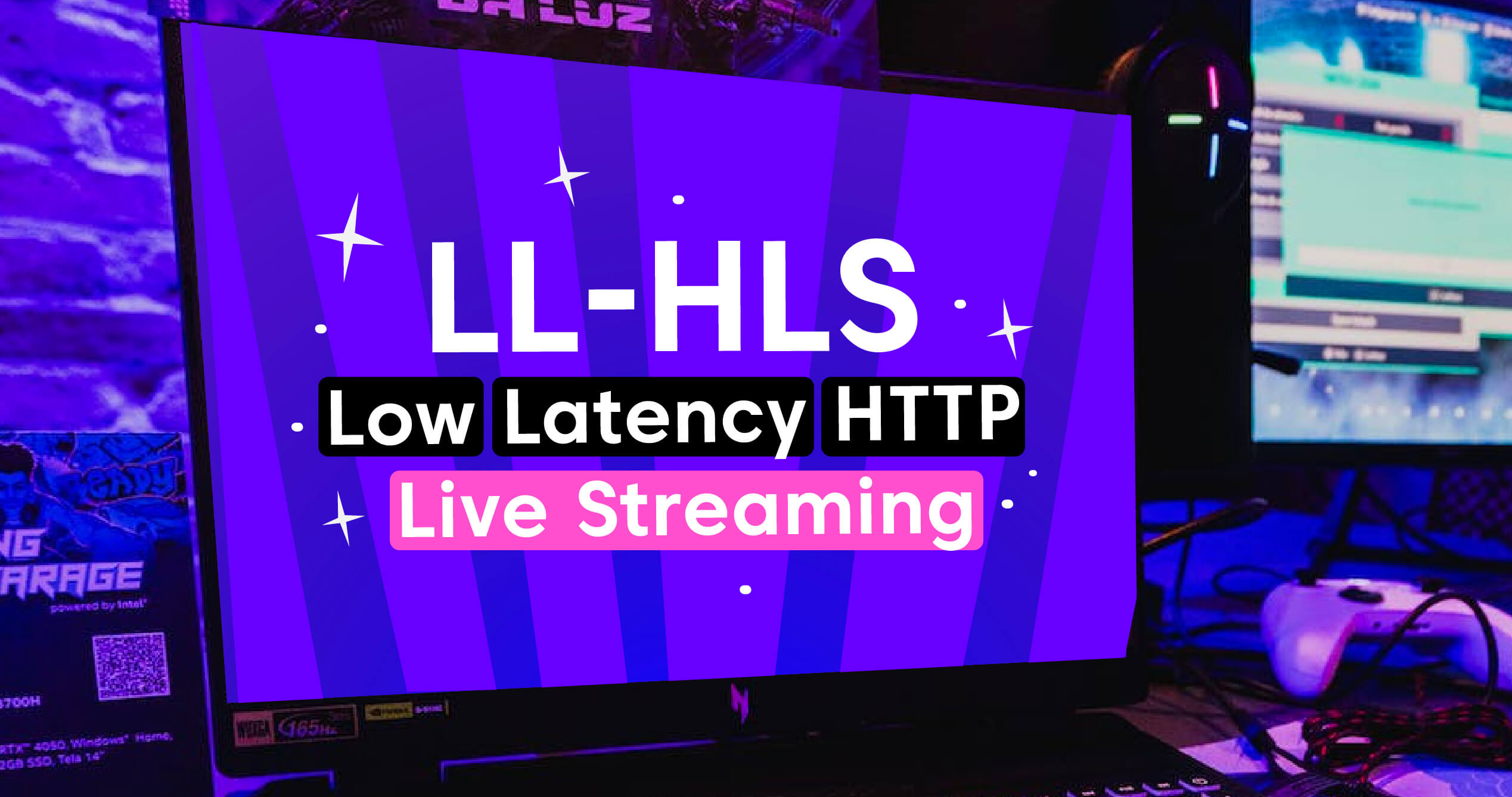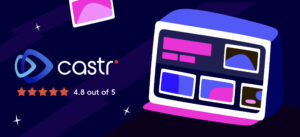Latency is the time it takes for a video to travel from the source (like a camera) to the viewer’s screen. In live streaming, low latency is very important. Why? Because it makes the video play faster and smoother for the viewer. This is where Low Latency HLS, or LL HLS, comes in.
LL HLS is a way to stream video that was made by Apple. It helps to make the latency even lower. This means that the video can play even faster for the viewer. In video streaming, this is a big deal. It can make the difference between a viewer staying to watch the video or leaving because it’s too slow.
So, if you’re streaming live video, you’ll want to know about LL HLS. It could help you improve your videos and keep your viewers happy. In this blog post, we’ll go into more detail about LL HLS and how you can use it in your live streams.
What is Latency in Video Streaming?tting a baseball and when the crowd sees it happen. This delay can affect the quality of live streams, especially for events that need real-time interaction.
Low latency is important for live streaming. It allows for quicker reactions between the video and the viewer.
What is Low Latency?
Low latency is a term that describes a short delay from when a video is captured until it is viewed. In live video streaming, a delay below 15 seconds is often considered low latency.
When you watch a live stream, you want the action to happen in real time. But there’s usually a delay. This delay can b
Latency in video streaming is the delay between capturing a video and when viewers see it. It’s like the time gap between hie due to the time it takes to capture the video, send it to a media server, and then send it to your device. This whole process is what we call latency.
Low-latency streaming aims to reduce this delay. It makes the video play almost at the same time it is captured. This is very important for live streams like sports events or concerts. You don’t want to hear about a goal on social media before you see it on your screen, right?
So, achieving low latency is a big goal for video streaming services. It improves the viewer’s experience by making the stream more real-time.
What is HTTP Live Streaming (HLS)?
HTTP Live Streaming, often called HLS, is a way to send video or audio over the internet. It is a system created by Apple that is used to stream video and audio to devices like iPhones and iPads, but it can also be used on other devices.
HLS works by breaking down the video or audio into small files, called media segments, and sending them over the internet one at a time. The media segments are put in a special list called a media playlist, which tells the video player what order to play them in.
This kind of streaming is known as adaptive bitrate streaming because the quality of the video can change as it plays. If the internet connection gets slower, the video quality will decrease, so the video can keep playing without stopping. This is done by having different media playlists for different video qualities and switching between them as needed.
HLS is widely supported and used worldwide for live streaming and on-demand streams. It allows for video content delivery on a global scale, with low latency and high video quality.
What is Low-Latency HTTP Streaming?
Low-latency HTTP Streaming (LL HLS) is a type of video streaming that allows quicker delivery of video content over the internet. Simply, it’s a way to watch live videos online with very little delay.
This streaming method is a newer version of the standard HLS (HTTP Live Streaming). The main difference is that LL HLS has reduced latency. Latency is the time it takes for the video to go from the origin server to your screen. In LL HLS, this time is much shorter, meaning you can see the video almost in real-time.
Apple Low Latency HLS (LL HLS) is a protocol extension of HLS. It was designed to improve video quality and reduce latency in live streams. This is especially useful for live events, where a few seconds of delay can make a big difference.
The Evolution of HLS to LL-HLS
The HLS, or HTTP Live Streaming, has been a reliable method for video streaming. But, as live streaming became more popular, the need for lower latency became clear. This led to the creation of LL-HLS, or Low Latency HLS.
LL-HLS is a version of HLS that reduces latency. This means that the time between when a video is filmed and when viewers see it is shortened. This is great for live streaming because it makes the video feel more “live” and real-time.
Apple’s Low Latency HLS is a big step in the evolution of HLS. It makes it possible to achieve low latency while still having good video quality. This is done by using smaller media segments and a method called chunked transfer encoding.
Moving from HLS to LL-HLS is a big change that can improve live streaming for everyone. It can improve the experience for viewers and make it easier for people to start supporting LL-HLS.
So, the evolution of HLS to LL-HLS is about reducing latency and improving the live streaming experience. And with the support of big companies like Apple, this evolution will continue.
Why Low Latency is Important in Video Streaming
In video streaming, low latency is very important. When watching a live stream, like a sports game or a concert, you want to see what’s happening as soon as possible. If there’s a big delay, you might hear about a goal or a song before seeing it. That can ruin the fun. Low latency streaming helps to make sure that doesn’t happen.
In standard video streaming, the video is broken up into small pieces, or “media segments.” These are then sent to your device one by one. But with low latency mode, the video is broken up into even smaller pieces. This means they can be sent and shown on your screen quicker.
But it’s not just live streams that benefit from low latency. On-demand streams, like movies or TV shows, can also use low latency to start quicker and have less buffering. And for video game streaming, low latency is crucial. Players must see what’s happening in the game as soon as possible to react and play well.
Low latency is also important for the people making the videos. If they’re filming a live event, they want to know their audience sees it in real-time. Lower latency means viewers can start watching quicker for on-demand content, making them more likely to stick around and watch more.
Low latency is key to a good video streaming experience. Whether you’re watching a live concert, a movie, or playing a video game, low latency can make it better. So, next time you’re streaming, think about the latency. It might be more important than you realize.
The Future of Streaming Solutions
The world of live video streaming is changing rapidly. With new technology, we can now deliver video content to viewers faster and with less delay. This is called low-latency streaming, and it’s the future of streaming solutions.
One of the most exciting advances in this area is Apple’s low-latency HLS. This type of low-latency streaming uses the HTTP Live Streaming (HLS) protocol. It’s designed to make video streams start faster and play without buffering, even when the viewer’s internet connection isn’t very strong. This can improve the quality of live streams and make them more enjoyable for viewers.
Another important technology is ULL or Ultra-Low Latency. This goes even further, reducing the delay in the stream to less than two seconds. This can make the live video almost like real-time, which is great for live sports, webinars, auctions, and concerts. When viewers can see and react to what’s happening right away, it can make the experience much more engaging.
To achieve low latency, these technologies use a few different techniques. One is adaptive bitrate, which adjusts the quality of the video stream in real-time based on the viewer’s internet connection. Another is chunked transfer encoding, which sends the video in small pieces, or “chunks,” to start playback sooner.
Apple’s low latency HLS and ULL are part of a bigger trend towards lower latency in video streaming. As more and more people watch live video online, the demand for low-latency streaming is growing. In the future, we can expect to see even more advances in this area.
For example, new techniques, like delta playlists and preload hints, are being developed to reduce latency further. These can make video streams start even faster and reduce buffering. Work’s also being done on backward compatibility so low latency streams can be played on older devices.
We may also see low-latency streaming being used more widely in digital rights management and on-demand streams. This could help to make video content delivery more efficient and improve the viewer’s experience.
Get Low-latency Streaming with Castr
Castr offers two advanced methods to ensure your video streaming has low latency. This means your viewers will get a smooth and real-time experience when they watch your live streams.
The first method is LL-HLS or Low Latency HLS. With this, your stream’s delay can be reduced to less than 15 seconds. This is a big improvement, making for a better viewing experience on both phones and computers.
The second method is ULL or Ultra-Low Latency. This is even better because it can cut the delay in your stream to less than two seconds. This is like being there in person. This is good for live sports, webinars, auctions, and concerts. These are all things where it’s important for the audience to feel like they are part of the action.
Right now, this feature is in the demo mode. This means it can only support up to 5 viewers simultaneously and is unavailable for trial users. Also, the Castr logo will be on your stream.
To start streaming with low latency, you set up your stream like you normally would. You use the RTMP(or SRT) server and key. Then, you turn on the button to get the Low-latency streaming URL. You can test it from the player URL Castr makes for you.
You can contact us anytime if you want to use this feature without the logo on your future streams or need help with anything. Our support team is available 24/7 and always ready to help.










